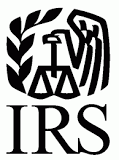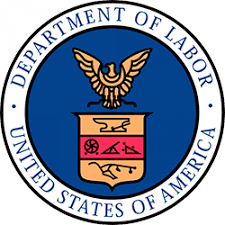The U.S. Department of Labor (DOL) published a final rule on May 27, 2020 that will allow employers to post retirement plan disclosures online or deliver them to employees by email, as a default. The DOL believes this will make it easier for employers to furnish retirement plan disclosures electronically, reducing administrative expenses and making disclosures more readily accessible and useful for employees.
Background
There are approximately 700,000 retirement plans covered by ERISA, covering approximately 137 million participants. ERISA-covered retirement plans must furnish multiple disclosures each year to participants and beneficiaries. The number of disclosures per year depends on the specific type of retirement plan, its features, and for defined benefit plans, the plan’s funding status.
Delivery methods for ERISA disclosures must be reasonably calculated to ensure that workers actually receive the disclosures. To deliver disclosures electronically, plan administrators previously had to rely on a regulatory safe harbor established by the DOL in 2002. See 29 CFR 2520.104b-1(c).
On August 31, 2018, the President issued Executive Order 13847, directing the DOL to review whether regulatory or other actions could be taken to make retirement plan disclosures more understandable and useful for participants and beneficiaries and to focus on reducing the costs and burdens that retirement plan disclosures impose on employers and others responsible for their production and distribution. The Order specifically emphasized that this review include an exploration of the potential for broader use of electronic delivery as a way to improve the effectiveness of the disclosures and to reduce their associated costs and burdens.
New Voluntary Safe Harbor
The new electronic disclosure rule establishes a new, voluntary safe harbor for retirement plan administrators who want to use electronic media, as a default, to furnish covered documents to covered individuals, rather than sending potentially large volumes of paper documents through the mail. The new safe harbor permits the following two optional methods for electronic delivery:
- Website Posting. Plan administrators may post covered documents on a website if appropriate notification of internet availability is furnished to the electronic addresses of covered individuals.
- Email Delivery. Alternatively, plan administrators may send covered documents directly to the electronic addresses of covered individuals, with the covered documents either in the body of the email or as an attachment to the email.
Retirement plan administrators who comply with the safe harbor will satisfy their statutory duty under ERISA to furnish covered documents to covered individuals. The safe harbor is limited in the following respects:
Limited Scope of the New Safe Harbor
The safe harbor is limited to retirement plan disclosures.
A plan administrator may use this safe harbor only for “covered individuals.” To be a covered individual, the person must be entitled under ERISA to receive covered documents and must have a valid electronic address (e.g., email address or smart phone number).
The new safe harbor does not supersede the 2002 safe harbor; the 2002 safe harbor remains in place as another option for plan administrators.
Protections for Plan Participants
The new safe harbor includes a variety of protections for covered individuals, including:
1. Right to Paper. Covered individuals can request paper copies of specific documents, or globally opt out of electronic delivery entirely, at any time, free of charge.
2. Initial Notification. Covered individuals must be furnished an initial notification, on paper, that the way they currently receive retirement plan disclosures (e.g., paper delivery in the US mail) is changing. The notice must inform them of the new electronic delivery method, the electronic address that will be used, and the right to opt out if they prefer paper disclosures, among other things. The notice must be given to them before the plan may use the new safe harbor.
3. Notifications of Internet Availability. Covered individuals generally must be furnished a notice of internet availability (NOIA) each time a new covered document is made available for review on the internet website.
To avoid “notice overload,” the final rule permits an annual NOIA to include information about multiple covered documents, instead of multiple NOIAs throughout the year.
The NOIA must briefly describe or identify the covered document that is being posted online, include an address or hyperlink to the website, and inform the covered individual of the right to request paper copies or to opt out of electronic delivery altogether.
The NOIA must be concise, understandable, and contain only specified information.
4. Website Retention. Covered documents must remain on an internet website until superseded by a subsequent version, but in no event for less than one year.
5. System Check for Invalid Electronic Addresses. Plan administrators must ensure that the electronic delivery system is designed to alert them if a participant’s electronic address is invalid or inoperable. In that case, the administrator must attempt to promptly cure the problem, or treat the participant as opting out of electronic delivery.
6. System Check at Termination of Employment. When someone leaves their job, the plan administrator must take steps to ensure the continued accuracy and operability of the person’s employer-provided electronic address.
Effective Date & Immediate Availability
The new safe harbor is effective July 27, 2020 (60 days after its publication in the Federal Register). However, the DOL, as an enforcement policy, will not take any enforcement action against a plan administrator that relies on this safe harbor before that date.






